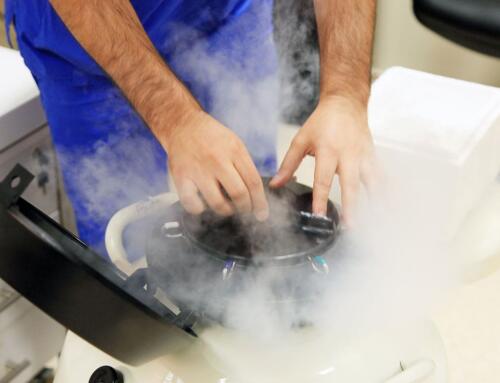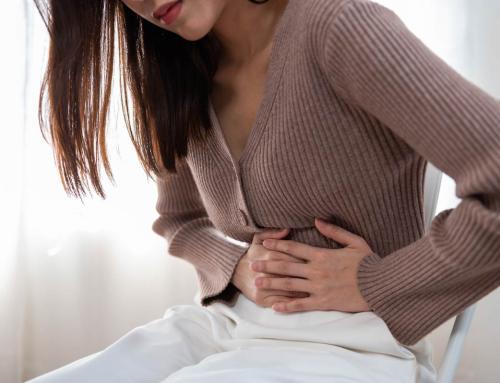Chronic endometriosis is a condition where endometrial tissue grows outside the uterus, causing inflammation and intense pelvic pain, particularly during menstruation or intercourse. Symptoms may include chronic fatigue, abdominal bloating, nausea, or discomfort during urination or bowel movements.
In some cases, endometriosis can also hinder or prevent embryo implantation and, therefore, pregnancy.
What is chronic endometriosis, and why does it occur?
Endometriosis is a hormonally dependent condition. Although not directly caused by hormones, its severity increases due to the presence of estrogen. It is a heterogeneous disease with three recognized phenotypes:
- Superficial peritoneal endometriosis: The mildest form, with superficial lesions appearing on the peritoneum.
- Ovarian endometriosis: Cystic masses develop from the growth of ectopic endometrial tissue within the ovary.
- Deep endometriosis: The most severe type, where endometrial tissue infiltrates more than 5 mm of the peritoneal surface and may reach the muscularis of certain pelvic organs (bladder, intestine, and ureters). This tissue can also be found in extragenital areas, such as the pleura, abdomen, or umbilical region.
Causes of endometriosis include:
- Retrograde menstruation. Menstrual blood (which contains endometrial cells) flows backward through the fallopian tubes and reaches the pelvic cavity instead of exiting through the uterine cervix and vagina. In this way, some cells may be deposited outside the uterine cavity and develop there.
- Cellular metaplasia. It is a process by which some cells located outside the uterus transform into cells similar to those of the endometrium and begin to grow.
- Proliferation of precursor cells. These cells can give rise to the disease and then spread through the blood and lymphatic vessels.
- Implantation of surgical scars. After surgical interventions such as hysterectomies or cesarean sections, endometrial cells can adhere to a surgical incision.
- Immune system disorders that prevent the body from recognizing and eliminating the endometrial tissue that grows outside the uterus.
Chronic endometriosis: Symptoms
Symptoms can manifest from menarche (first menstruation) to menopause, significantly impacting a woman’s quality of life. One common symptom is chronic pelvic pain, which tends to intensify during the estrogen-dominant phase of the menstrual cycle or during intercourse. Occasionally, this intense pain may be confused with pelvic inflammatory disease (PID).
Chronic endometriosis has other severe symptoms, such as adenomyosis. Adenomyosis occurs when endometrial tissue shifts and develops in the muscular wall of the uterus, thickening, breaking down, and causing bleeding throughout the menstrual cycle (both during and between menstruations). Adenomyosis can also lead to an enlarged uterus and painful heavy menstrual bleeding.
Additionally, chronic endometriosis can alter ovarian functionality (endometrial adhesions destroy healthy tissue) and affect ovarian reserve or obstruct fallopian tubes, hindering fertilization.
How does chronic endometriosis affect embryo implantation?
Chronic endometriosis can, to a lesser extent, hinder embryo implantation. Studies suggest that up to 30% of patients with implantation failures are diagnosed with endometriosis. Many of them struggle to synthesize the endometrial ligament, and their levels of integrins (cellular adhesion molecules for implantation) are often very low. Furthermore, endometrial lesions (also known as endometriomas) can release toxic substances affecting both the egg and sperm, compromising fertilization, implantation, and embryo development.
Are there risk factors for this disease?
According to the World Health Organization (WHO), endometriosis affects approximately 190 million women and girls of reproductive age worldwide (almost two million in Spain), accounting for almost 10% of this population group. It is currently considered a leading cause of infertility in women, depending on its severity and affected areas.
Some risk factors for endometriosis include
- Family history (genetic predisposition)
- Early menarche
- Late menopause
- Short menstrual cycles (27 days or less)
- Long menstruations (7 days or more)
- Very high estrogen levels
- Low body mass index (BMI)
- Reproductive system disorders
- Medical conditions that hinder normal blood flow during menstruation.
Approach to chronic endometriosis infertility treatments
To date, there is no known way to prevent chronic endometriosis. However, studying the disease further, early diagnosis, and treatment can slow or halt its natural progression and reduce symptoms.
Nonsteroidal anti-inflammatory drugs and analgesics such as ibuprofen and naproxen help control pain and inflammation. Gonadotropin-releasing hormone analogs and some contraceptives (birth control pills, vaginal rings, patches, etc.) can also reduce some symptoms.
When endometriosis causes infertility and, depending on its severity, surgery may be recommended to remove lesions, adhesions, and scar tissues.
In patients with endometriosis and implantation failures, in vitro fertilization (IVF) may be recommended, with special attention to endometrial preparation.
Moreover, both eggs and embryos from patients with severe chronic endometriosis often have poorer morphology, making egg donation one of the best alternatives for achieving pregnancy.
The success of IVF in women with chronic endometriosis depends on the extent and severity of the disease, age, and the proposed technique.
At Equipo Juana Crespo, we analyze each case individually and create tailored treatments for each patient. Feel free to request information without obligation!
















